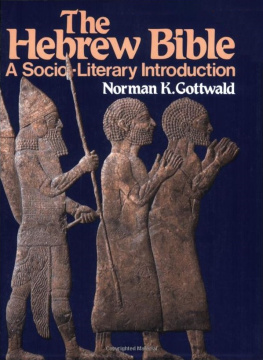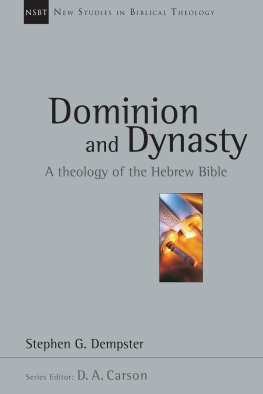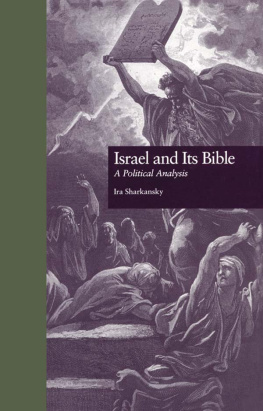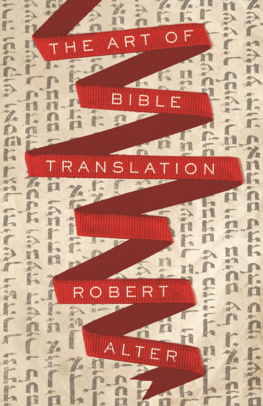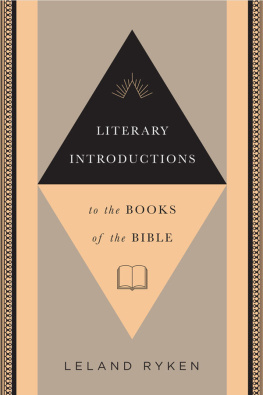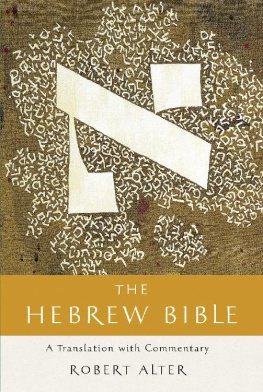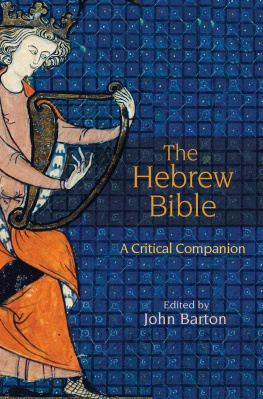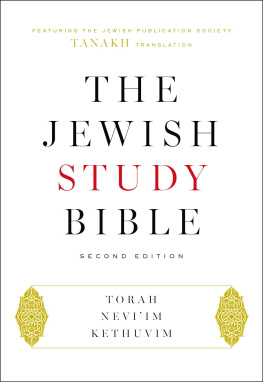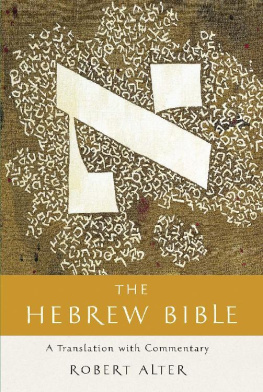Contents
Illustrations
Abbreviations
Preface
PART I
THE TEXT IN ITS CONTEXTS
Chapter 1: Angles of Vision on theHebrew Bible
1. A Wealth of Methods inBiblical Studies
2. The Confessional ReligiousApproach to the Hebrew Bible
3. The Historical-CriticalApproach to the Hebrew Bible
3.1 The Bible as a HumanCreation
3.2 Source Criticism and FormCriticism
3.3 Authorship of BiblicalBooks
3.4 Biblical History andArchaeology
4. Interaction BetweenReligious and Historical-Critical Approaches to Biblical Studies
4.1 Collision and Accommodationof Conflicting Methods
4.2 Attempts at a Synthesis:Existentialism and Biblical Theology
4.3 Breakdown of Consensus inBiblical Studies
5. Emergence of New Literaryand Social Science Approaches to the Hebrew Bible
5.1 Perceived Limits ofHistorical and Religious Approaches
5.2 Newer Literary Methods
5.2.a The Bible as Literatureand New Literary Criticism
5.2.b Structural Criticism
5.3 Social Science Methods
5.3.a Social Reconstruction ofEarly Israel
5.3.b Social Reconstruction ofProphecy and Apocalyptic
5.3.c Varieties of SocialScientific Criticism
5.4 Common Ground in NewLiterary Criticism and Social Scientific Criticism
6. Creative Ferment inContemporary Biblical Studies
6.1 A Common-sense Assessmentof Options
6.2 A Preview of BiblicalStudies to Come
Chapter 2: The World of the HebrewBible
7. Physical and EconomicGeography
7.1 The Ancient Near East
7.2 Palestine
7.3 Subregions Important toBiblical Israel
7.3.a The Coastal Plain
7.3.b The Hill Country of Judah
7.3.c The Hill Country ofSamaria
7.3.d The Hill Country ofGalilee
7.3.e The Rift Valley
7.3.f The Hill Country ofGilead
7.3.g Ammon, Moab, and Edom
8. Archaeology: Material andWritten Remains
8.1 Archaeology of the AncientNear East
8.2 Archaeology of Palestine
9. Political, Cultural, andSocial History of the Ancient Near East
Chapter 3: The Literary History ofthe Hebrew Bible
10. Relation of the HebrewBible to Other Bodies of Literature
10.1 Independent NationalLiteratures: The Ancient Near Eastern Texts
10.2 Jewish and ChristianLiteratures Dependent on the Hebrew Bible
10.2.a Apocrypha andPseudepigrapha
10.2.b Dead Sea Scrolls
10.2.c New Testament and Talmud
11. How the Hebrew Bible Cameto Be
11.1 Formation of the SeparateLiterary Units
11.1.a Processes of LiteraryComposition
11.1.b Oral Tradition andLiterary Genres in the Composition Process
11.2 Final Formation of theHebrew Bible
11.2.a The AuthoritativeCollections,
The Law
The Prophets
The Writings
11.2.b Factors in the CanonicalClosure: From Ezra to the Rabbinic Assembly at Jamnia
11.3 Preservation andTransmission of the Hebrew Bible
11.3.a The Transmission ProcessExtending to the Stabilization of the Consonantal Text, ca. 100 c.e.
11.3.b The Transmission ProcessExtending to the Stabilization of the Vocalic Text, ca. 1200 c.e.
11.3.c Printed Editions of theHebrew Bible
12. Translations of the HebrewBible
12.1 Ancient Versions
12.1.a Greek Septuagint
12.1.b Other Greek Versions andHexapla
12.1.c Aramaic Targums
12.1.d Old Syriac, Peshitta,and Syro-Hexapla
12.1.e Old Latin and Vulgate
12.2 English Versions andTranslations
12.2.a English Versions andTranslations Through 1952
12.2.b English Versions andTranslations Since 1952
PART II
INTERTRIBAL CONFEDERACY: ISRAELS
REVOLUTIONARY BEGINNINGS
Prologue: On the Sources forIsraels Premonarchic History
13. The Great Traditionists ofAncient Israel
13.1 The Yahwist (J)
13.2 The Elohist (E)
13.3 The DeuteronomisticHistory (DH)
13.4 The Priestly Writer (P)
13.5 The Redaction of JEP
13.6 The Common Source ofYahwist and Elohist (G)
14. The Bearing of the LiteraryTraditions on the Early History of Israel
14.1 Nongovernmental and OralOrigins of the Traditions
14.2 United Tribal Israel asthe Subject of the Traditions
14.3 Expansion and Elaborationof the History-like Themes of the Traditions
14.4 Summary and MethodologicalImplications
Chapter 4: Traditions About theFathers and Mothers of Israel
15. The Shape of the Traditionsin Genesis 1250
15.1 Distribution of theTradition Units in J, E, and P
15.2 Analysis of the TraditionUnits by Literary Genres
15.3 Composite Unity of theTraditions
15.3.a Saga Cycles and SagaChains
15.3.b Itinerary and Chronology
15.3.c Motifs of DivinePromises to the Ancestors
15.3.d Type-Scenes and OtherLiterary Features
15.4 Individual FamilyTraditions or Tribal Group Traditions?
16. Sociohistoric Horizons ofthe Ancestor Traditions
16.1 Chronology and Archaeology
16.2 Political and GeographicalData
16.3 Customs and Laws
16.4 Social Struggles in theAncestor Traditions
16.4.a The UncertainSocioeconomic Niche of the Ancestors
16.4.b Concerns AboutProduction, Reproduction, and Self-defense
Chapter 5: Traditions About Moses:Exodus, Covenant, and Lawgiving
17. The Shape of the Traditionsin Exodus, Leviticus, and Numbers
17.1 Distribution of theTradition Units by Sources and Literary Genres
17.2 Complex Editing of theMoses Traditions
18. Historical-CriticalApproaches to the Moses Traditions
18.1 The Egyptian Context
18.2 Moses: FormativeInfluences and Leadership Roles
18.3 Unity of Action in Exodusand Wandering
19. Religion of Moses and theExodus-Wilderness Israelites
19.1 Covenant
19.2 Covenant Stipulations:Laws
19.2.a Priestly Instructionsand Regulations
19.2.b Collections of CustomarySocioeconomic and Religious Laws
19.2.c Terse Lists ofProhibitions: The Ten Commandments
19.3 The Divine Name
19.4 Cultic Rites and Objects
20. Newer Literary Approachesto the Moses Traditions
20.1 Folk Tale Plot-motifs andTraditional Episodes

